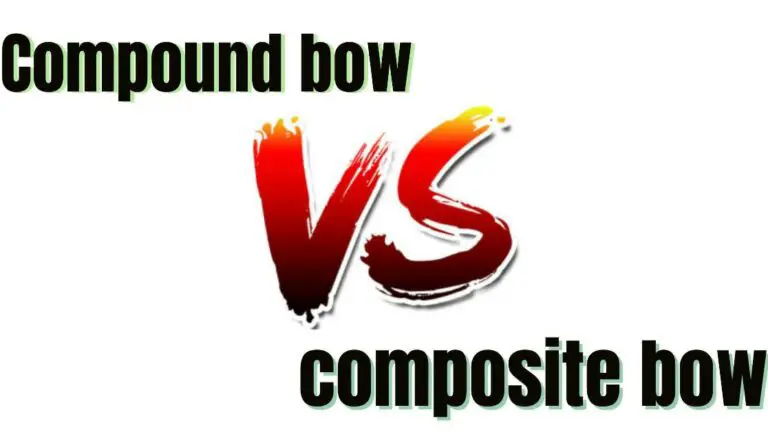4 Fletching Vs 3 Fletchings: Which Is Better for you?
4 fletching vs 3 fletchings? There is no simple answer to which one is better when comparing 3 fletch and 4 fletch arrow configurations. One works better than the other according to the situation.
4 Fletching vs 3 Fletching
In most cases, an average bowman would hardly notice any change in working whether they are using 3 or 4 arrow vanes or feathers.
4 fletching vs 3 fletchings
Let’s discuss the difference of 4 fletching vs 3 fletchings in details.
Importance of Arrow Fletching
Arrow Fletching is critical to the movement of an arrow. It smoothes the arrow’s flight through the shaft. This enables the arrow to rotate effectively after leaving the bowstring.
The aerodynamic force known as Drag helps in rotating the shaft through the Fletching surface. When the shaft spins, the arrow movement stabilises. This way all the minor imperfections in the arrow and the bowstring movement are eliminated. Furthermore, the arrow can follow the speed and flight path without any difficulty.
Fletching becomes particularly important when feathers and vanes are not available. Releasing an arrow without a proper release would result in an unstabilized and improper flight trajectory of the shot.
Moreover, arrows need drag force for stability and a well-targeted shot The drag force can also be increased through a rough surface area.
You can increase the surface area by adding more fletches to the configuration. However, the fletching is available in different textures and designs which helps builders to manufacture arrows with a varying drag force as need be.
Increased drag force steers and stabilizes large arrowheads. Less drag force is used for steering small field points. However, make sure you only apply the right amount of drag force or else it would result in speed issues.
This process is further explained when explaining the use of parabolic feathers vs shield cut.
Why Three Fletch Arrows are Commonly Used?
Three fletch arrows are the most common of all the fletching configurations. That’s because they provide good stabilization and maintain a good arrow trajectory and shot.
- For shooting targets or hunting, a 3 fletching arrow gives you the ability to release your arrow with a good drag and spin. They also steer your arrow successfully.
- In addition to 3 fletching, 4 fletch arrow configurations are also used for improving stability. But this has a greater surface area and drag.
4 fletching vs 3 Fletching: Speed
Arrows with 3 fletching have a smaller surface area by 25% compared to a 4 fletching arrow. This is also a reason why the arrow stability and drag are better with 4 fletch arrows.
However, there are still different archers who value 3 fletch configured arrows for greater speed due to less drag.
Long Distance Shooting
4 fletch arrows have got an increased drag which decreases the arrow speed. This affects the success of a shot. As a result, different archers use three fletch arrows for long-distance shooting.
Vanes Length & Profile
Long vane arrows (around 3 or more inches) don’t need a four-lane configuration. The same is the case with high-profile vanes.
That’s because long and high-profile vanes have a good boundary with a large surface area. This adds to more drag which eventually stabilizes the arrow flight.
The only thing to be considered is the vane height profile and the arrow rest.
Some people prefer using a low profile vane over a high profile one. That’s because a high-profile vane comes in a lot of contacts particularly when using a Whisker Biscuit arrow rest.
But, if speed and arrow flight is not disturbed, you can consider using the vanes with a Whisker Biscuit arrow rest.
Feather Fletching
Many archers commonly use three feathered arrows as they ensure the stability of the arrow flight path. The stability comes from the air drag due to the feathers.
Feathers go through a lot of spin and drag compared to the vanes. That is due to the feather texture which is quite rough. Compared to vanes, these feathers are manufactured using smooth plastic.
They are also light in weight compared to vanes. This gives feather fletched arrows an edge regarding speed for small distances. However, at a long distance, these arrows are a bit slow in comparison to the vane fletched arrows.
Resources and Labor
There is not much difference when comparing a three-fletch vs four-fletch arrow regarding performance. The only significant difference lies in the number of sketches. It is better to use an extra feather or a vane per arrow. This requires a lot of work regarding arrow fletching.
This is also what makes a 4 fletch arrow popular among the archers. But 3 fletch arrows are still common and popularly configured. But there are situations in which a four-feather configuration is appropriate than the three. This is the case when you require an increased drag and stability to steer effectively along with the arrow’s head.
Heavy Arrows
4 fletching arrow settings are common with heavy arrows or arrows which have big heads. A three fletched area results in an improper surface area and drag. This results in an unstable flight path right after it is released from the bowstring.
With an extra vane or a feather, try using heavy arrows. This enhances arrow performance and rotation
Less Common Vanes
A 4 vane is perfect for short and low profile vane distance. They have a small surface that enables arrow rotation. But, more vane requires more arrows with low-profile and short distance.
Archer Reasons for Liking 4 Fletch Arrows
While comparing the appearance of 4 fletching vs 3 fletchings, you will notice one thing. That is 4 fletching arrows are beautiful with an attractive outer appearance They have an improved shot and success rate during the wind.
Conclusion
Fletching configuration doesn’t make any difference as far as the shot accuracy is concerned. The same is the case with arrow success.
3 Fletching arrows have improved stability. This ensures an effective flight trajectory. Also, you would love the aesthetics of 4 fletching. Consider it if you haven’t already.
Last but not the least, 4 fletching vs 3 fletching, the success of your shot varies minimally.




